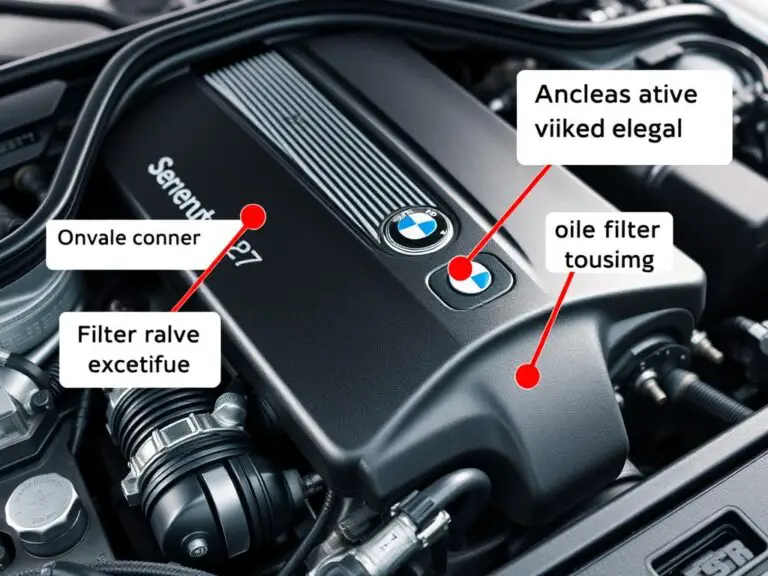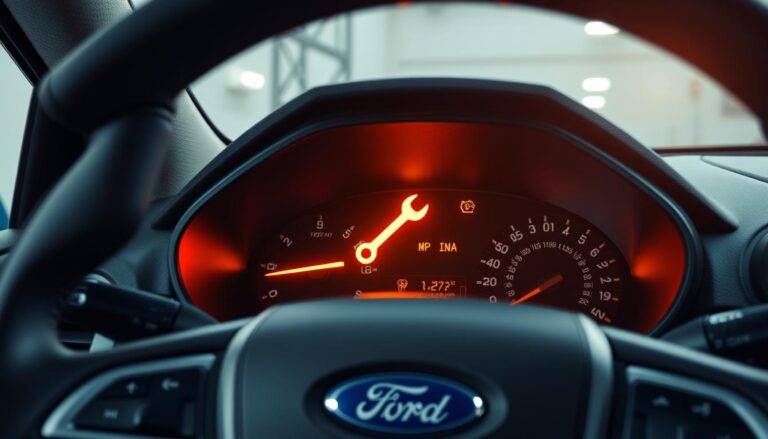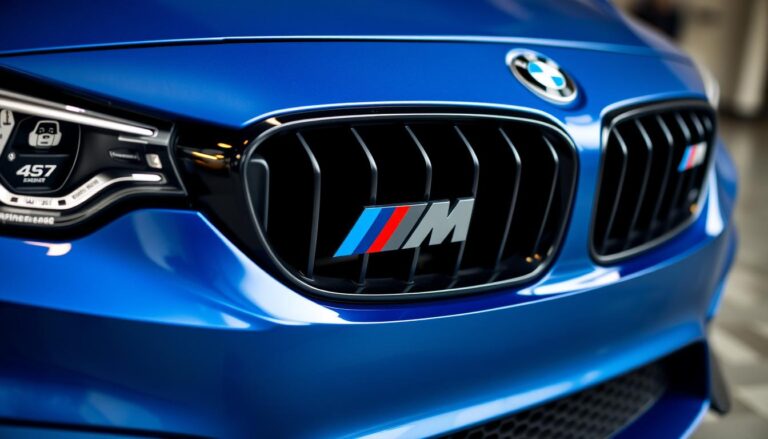Headlight malfunctions, notably BMW headlight issues, pose a substantial risk to road safety. The necessity for troubleshooting these malfunctions cannot be overstated, given their impact on adherence to road regulations and driver visibility. The left low beam malfunction is a prevalent concern among BMW owners, stemming from a multitude of causes that necessitate meticulous diagnosis.
Grasping the underlying causes and employing efficacious troubleshooting BMW headlights methodologies is paramount. Common culprits include burnt-out bulbs, defective wiring, and malfunctions in the control unit. For a comprehensive grasp of these causes and their remedies, consulting resources such as BMW dipped beam failure can offer indispensable insights.
Key Takeaways
- Common causes of BMW left dipped beam failure include burned-out bulbs and faulty wiring.
- Symptoms may include dim or uneven headlight illumination and dashboard warning lights.
- Solutions involve diagnosing the issue, replacing burned-out bulbs, and evaluating the control unit.
- Troubleshooting requires a systematic approach, including visual inspections and diagnostic checks.
- Genuine BMW parts should be used for replacements to ensure compatibility and quality.
Understanding BMW Headlight Systems
The complexity of BMW headlight systems necessitates a thorough comprehension for the diagnosis and rectification of malfunctions, such as those affecting the left low beam. Contemporary BMWs are endowed with cutting-edge headlight technologies, aimed at augmenting safety and enhancing the driving experience.
Types of Headlight Systems in Modern BMW Models
Contemporary BMWs boast a variety of headlight configurations, including LED and laser headlights. These innovations are crafted to deliver unparalleled illumination, often with adaptive capabilities that modify their beam patterns in response to driving scenarios.
| Headlight Type | Features | BMW Models |
|---|---|---|
| LED Headlights | Energy-efficient, long-lasting, adaptive beam control | Most modern BMW models |
| Laser Headlights | High-intensity illumination, long-range lighting | High-end BMW models (e.g., BMW 7 Series, BMW X5) |
How BMW Low Beam Headlights Function
BMW’s low beam headlights are engineered to offer illumination suitable for both urban and rural environments, without causing glare to oncoming traffic. Employing advanced technologies like LED arrays or laser diodes, these headlights generate a precise cutoff, thus minimizing glare for other drivers.
“The adaptive LED headlights in modern BMWs can adjust their beam pattern in real-time, enhancing safety and visibility.”

The operational efficacy of low beam headlights is paramount for ensuring safety during nighttime driving. Malfunctions in the left low beam headlight can profoundly affect driving visibility and safety, underscoring the imperative for prompt diagnosis and repair.
Left Low Beam Malfunction on BMW: Causes and Repair Solutions
The malfunction of the left low beam on a BMW can stem from a multitude of factors, encompassing everything from the straightforward failure of a bulb to intricate electrical malfunctions. Grasping these causes is imperative for effective troubleshooting and repair endeavors.
Bulb Failure and Replacement Indicators
Bulb failure is a prevalent cause of left low beam malfunctions. BMW headlight bulbs, with their finite lifespan, can fail due to prolonged usage, voltage fluctuations, or inherent manufacturing defects. Signs of bulb failure include a noticeable diminution in brightness or a headlight that remains dark. For detailed guidance on bulb replacement, refer to resources dedicated to fixing non-working headlights.
Electrical Connection Problems
Electrical connection malfunctions can also precipitate left low beam malfunctions. Corrosion, wear, or damage to connectors can disrupt the electrical flow to the headlight, leading to its failure. It is crucial to regularly inspect the electrical connections to avert such malfunctions.
Control Module and Ballast Issues
The control module and ballast are pivotal components of contemporary BMW headlight systems. A malfunctioning control module can impede the headlight’s functionality, while a defective ballast can hinder the bulb’s ignition. Diagnosing problems with these components necessitates specialized tools and expertise.
Wiring Harness and Fuse Complications
Damage to the wiring harness or fuse blowouts can also induce left low beam malfunctions. The wiring harness, vulnerable to damage from heat, vibration, and environmental factors, can lead to short circuits or open circuits. A thorough examination of the wiring harness and fuses is essential in diagnosing headlight malfunctions.
Common Model-Specific Issues
Certain BMW models are more susceptible to specific headlight-related issues. For instance, some models may experience known problems with the headlight assembly or control module. Familiarity with these model-specific issues can expedite diagnosis and repair.
| Cause | Symptoms | Repair Solution |
|---|---|---|
| Bulb Failure | Dim or dark headlight | Replace the bulb |
| Electrical Connection Problems | Intermittent headlight function | Inspect and clean/replace connectors |
| Control Module Issues | Headlight malfunction | Diagnose and replace the control module |
| Wiring Harness Damage | Short circuits or open circuits | Repair or replace the wiring harness |

Diagnosing Your BMW’s Left Low Beam Problem
Grasping the intricacies of diagnosing left low beam malfunctions in your BMW is paramount for ensuring unimpeded visibility and safety on the thoroughfare. The diagnostic process necessitates a meticulous methodology, encompassing visual assessments, the deployment of specialized diagnostic apparatus, and the comprehension of symptoms indicative of specific malfunctions.
Initial Visual Inspection Steps
Initiate by conducting an exhaustive visual examination of the left low beam headlight assembly. Investigate for any evidence of physical damage, such as fractures in the lens or damage to the housing. Verify that the bulb is correctly positioned and that no obstructions impede the light’s path.
Inspect for any manifestations of moisture or water ingress, as these can precipitate electrical malfunctions. A visual examination frequently uncovers the root cause of the issue or delineates the direction for further diagnostic endeavors.
Using BMW-Specific Diagnostic Tools
Employment of BMW-specific diagnostic tools affords profound insights into the functionality of your vehicle’s headlight system. These instruments facilitate the identification of malfunctions in the control module, ballast, and other critical components.
Utilizing these tools, retrieval of fault codes becomes feasible, pinpointing the genesis of the problem. This focused methodology not only expedites the diagnostic process but also simplifies the identification of left low beam malfunctions.
Testing Electrical Components
Electrical component testing within your BMW’s left low beam headlight system is indispensable. This entails verification of the wiring for any signs of damage or deterioration, examination of the fuse to ascertain its integrity, and inspection of electrical connections for corrosion or looseness.
Identifying Symptoms and Their Meanings
Diverse symptoms can herald a plethora of problems with your BMW’s left low beam headlight. For example, a dim or flickering light may signify a failing bulb or an electrical supply issue.
A headlight that fails to function altogether could indicate a more profound problem, such as a faulty control module or a wiring defect.
| Symptom | Possible Cause |
|---|---|
| Dim or Flickering Light | Failing Bulb, Electrical Supply Issue |
| Non-Functional Headlight | Faulty Control Module, Wiring Issue |
Adherence to these diagnostic steps enables precise identification of the issue plaguing your BMW’s left low beam headlight, facilitating the requisite repairs.
Step-by-Step Repair Solutions for BMW Headlight Issues
Addressing BMW headlight malfunctions necessitates a methodical approach, commencing with the identification of the root cause. This could range from a defective bulb to electrical connection anomalies or control module malfunctions. A thorough understanding of the underlying issue is paramount for an effective repair strategy.
Replacing a Faulty Bulb or Assembly
One prevalent issue with BMW headlights pertains to bulb failure. The replacement of a defective bulb or assembly, when equipped with the appropriate tools and adhering to precise steps, is a relatively straightforward endeavor.
Required Tools and BMW-Compatible Parts
To undertake the replacement of a faulty bulb, a basic toolkit consisting of a screwdriver and a bulb compatible with your BMW model is indispensable. It is imperative to consult the owner’s manual or a repair guide specific to your BMW model to ascertain the correct replacement parts.
Removal and Installation Process
The process entails accessing the headlight assembly, removing the obsolete bulb, and installing the new one. This procedure may exhibit slight variations based on your BMW model, necessitating adherence to a model-specific guide. “Always refer to your BMW owner’s manual for specific instructions on replacing headlight bulbs,” as BMW experts emphasize.
Fixing Electrical Connection Problems
Electrical connection malfunctions can also precipitate BMW headlight malfunctions. Identifying and rectifying these issues demands a deeper technical acumen but remains within the DIY capabilities of many BMW owners.
Locating and Repairing Damaged Wiring
The initial step in addressing electrical connection problems is to pinpoint the source of the issue, typically by inspecting the wiring harness for damage or corrosion. Once identified, the damaged wiring can be repaired or replaced using appropriate electrical connectors and wiring.
Cleaning Corroded Connections
Corrosion on electrical connections can also precipitate headlight malfunctions. Utilizing a suitable electrical contact cleaner to clean these connections can often rectify the issue. This is a simple yet effective measure in maintaining your BMW’s electrical systems.
Addressing Control Module Failures
Control module failures represent more intricate issues that necessitate a profound comprehension of BMW’s electrical systems. Resetting or replacing the control module can resolve headlight malfunctions stemming from module failures.
Resetting the Module
In certain instances, resetting the control module can rectify the issue without necessitating replacement. This process typically involves employing BMW-specific diagnostic tools to reset the module to its default settings.
Replacement Procedures
If resetting the control module proves ineffective, replacement may be imperative. This entails procuring a new control module compatible with your BMW model and adhering to the manufacturer’s instructions for installation.
When to Seek Professional BMW Service
While many BMW headlight issues can be resolved through DIY repairs, certain complexities may necessitate professional intervention. If the cause of the issue remains unclear or if you are uncomfortable with the repair process, seeking professional BMW service is advisable.
“For complex issues, notably those involving advanced technology such as adaptive headlights, professional assistance is not merely advisable but essential to ensure safety and quality of repair,” a BMW service expert notes.
Conclusion
The imperative of headlights’ functionality for vehicular safety, notably under nocturnal or obscured visibility, cannot be overstated. For BMW proprietors, the rectification of left low beam anomalies is paramount to uphold vehicular integrity and operational efficacy. A comprehensive grasp of the etiology behind such malfunctions, coupled with the implementation of the repair methodologies delineated, empowers drivers to rectify issues expeditiously.
Efficient BMW diagnostic endeavors necessitate the identification of the fundamental cause of the malfunction, encompassing bulb defects, electrical interface irregularities, or control module malfunctions. The deployment of BMW-centric diagnostic apparatuses facilitates this identification. Post-diagnosis, the requisite corrective action, such as bulb substitution or electrical interface rectification, can be executed.
In scenarios of complexity or uncertainty, the recourse to professional BMW service is advisable. Such specialists are equipped to offer specialized assistance in the repair or replacement of headlight components, thus ensuring the optimal functionality of the vehicle’s illumination system. By ensuring the integrity of their vehicle’s headlights, BMW owners can partake in driving experiences characterized by safety and confidence.
FAQ
What are the common causes of left low beam malfunction on BMW vehicles?
The malfunctions stem from a variety of sources, including bulb failure, electrical connection problems, and issues with the control module and ballast. Complications with the wiring harness and fuses also contribute to the problem. Model-specific issues further complicate the diagnosis and repair.
How do I diagnose a left low beam problem on my BMW?
The diagnostic process begins with a visual inspection to identify any obvious signs of damage. Utilizing BMW-specific diagnostic tools is crucial for a thorough examination. Testing the electrical components is essential to pinpoint the root cause. Understanding the symptoms and their implications is vital for effective troubleshooting.
Can I replace a faulty BMW headlight bulb myself?
Replacing a faulty bulb or assembly is a feasible DIY task, provided you possess the necessary tools and BMW-compatible parts. This approach can save on professional service costs and offer a sense of accomplishment.
What are the steps to fix electrical connection problems in BMW headlights?
To rectify electrical connection problems, the first step is to locate and repair any damaged wiring. Subsequently, cleaning corroded connections is imperative to ensure optimal functionality. These steps are critical for restoring the headlight system’s integrity.
How do I address control module failures in my BMW’s headlight system?
Control module failures necessitate a thorough evaluation. In some cases, a simple reset may suffice. In more severe instances, replacement of the module is required. The approach depends on the nature and extent of the failure.
When should I seek professional BMW service for headlight issues?
Professional service is advisable when the diagnosis is unclear, DIY repairs fail to resolve the issue, or specialized tools and expertise are required. This ensures the problem is addressed correctly, preventing further complications.
Are there any model-specific headlight issues I should be aware of?
Certain BMW models are prone to specific headlight-related issues. These can include design flaws or known problems reported by other owners or the manufacturer. Being aware of these can help in anticipating and addressing potential problems.
How often should I inspect my BMW’s headlights to prevent malfunctions?
Regular inspections, ideally during routine maintenance checks, are crucial for early detection of potential issues. This proactive approach helps prevent malfunctions and ensures optimal performance of the headlight system.
Can using non-BMW compatible parts damage my vehicle’s headlight system?
Yes, utilizing non-compatible parts can potentially damage your BMW’s headlight system. It is essential to use BMW-approved components to avoid such risks and ensure the longevity and performance of the headlight system.


